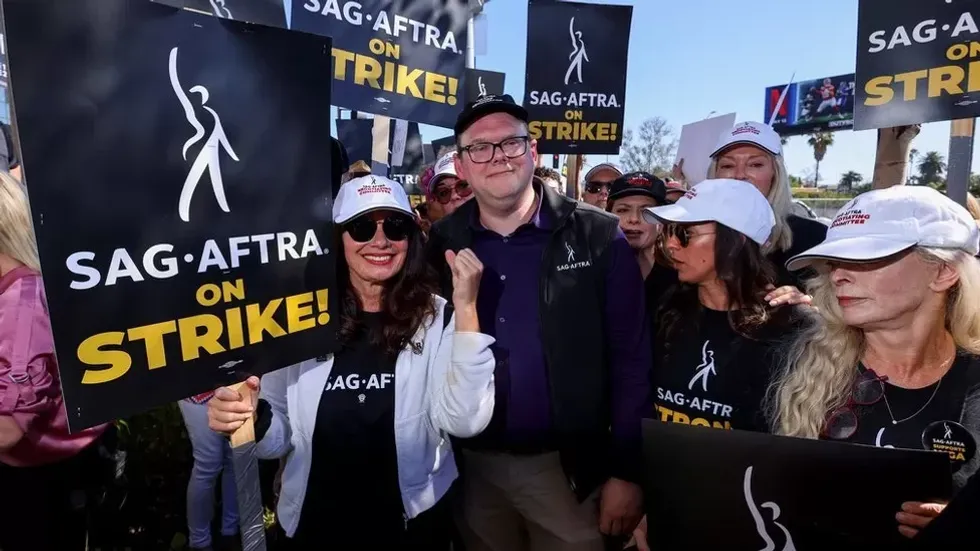
As an entertainment outlet that educates filmmakers on everything from how to make films to great resources to the current climate and breaking news in the entertainment industry, we became slightly nervous when SAG-AFTRA released the rules for their ongoing strike.
The SAG-AFTRA strike has sparked a new discussion and created some confusion about what is forbidden and what is still OK. Luckily, SAG-AFTRA has put out a detailed FAQ for members, non-members, indie producers, and other groups.
Let’s get into it.
What Indie Producers Need to Know

While actors are barred from working on projects backed by the studios and streamers a part of the AMPTP, SAG-AFTRA has created an “interim agreement” that allows indie productions to work with SAG-AFTRA members as long as they are truly independent of the AMPTP and agree to be bound retroactively to whatever contract terms eventually achieve with the AMPTP when the strike settled, which doesn’t seem like will be happening in the upcoming weeks.
Something indie producers need to know is that there are terms that are established by SAG-AFTRA and the production has to be truly independent of the AMPTP companies. SAG-AFTRA actors may work in their pictures and shows without any fear that doing so means crossing picket lines or otherwise demonstrating any lack of solidarity with the union.
As indie producers already know, these agreements incorporate the terms of the Theatrical Basic Agreement, with certain differences regarding pay and other terms depending on the project’s budget.
According to Deepfocus, “Other than the lowest budget level agreements (the Short Project Agreement, which is designed for projects with a maximum budget of $50,000 and a maximum total run time of 40 minutes, the Micro Budget Agreement, which is designed for projects budgeted at $20,000 or less per picture or per episode, and the Student Film Agreement), all of the theatrical contracts are now subject to the strike. This includes the Ultra Low Budget, Moderate Low Budget, and Low Budget Theatrical Agreements, as well as the Special New Media Agreement, which is limited to projects with an initial new media release.”
If your production is not yet a signatory company, you can enter into an Interim Agreement when the terms are released. Contact the guild representative who helped you with the signatory process.
Can We Still Talk, Review, and Learn from New Releases?
Film critics and entertainment journalist are not on strike with the WGA or SAG-AFTRA. However, journalist will not be talking with writers or actors for upcoming projects while the unions are still on strike as it is promoting struck work and is therefore considered scabbing.
You Cannot Promote Movies, Even if You’re an Influencer

SAG-AFTRA has issued rules during the strike for social media influencers, both in and outside of the guild, that request that promotional works from the studios and streamers do not take place. This means that influencers cannot show off any promotional merch or boxes they receive, attend red-carpet events, or conduct interviews.
Explicitly written under strikes Dos and Don’ts on the SAG-AFTRA Strike website for social media influencers, it reads, “Any non-member seeking future membership in SAG-AFTRA who performs covered work or services for a struck company during the strike will not be admitted into membership in SAG-AFTRA.”
Even if a social media influencer isn’t getting paid to push on social media for a studio/streamer, it’s best not to do so, even as a fan. “Influencers should refrain from posting on social media about any struck work regardless of whether they are posting organically or in a paid capacity,” reads Sagaftrastrike.org.
The SAG-AFTRA site also states, “If an influencer is already under contract to promote struck work, then the influencer should fulfill their work obligation.”
Source: SAG-AFTRA
Author: Alyssa Miller
This article comes from No Film School and can be read on the original site.
